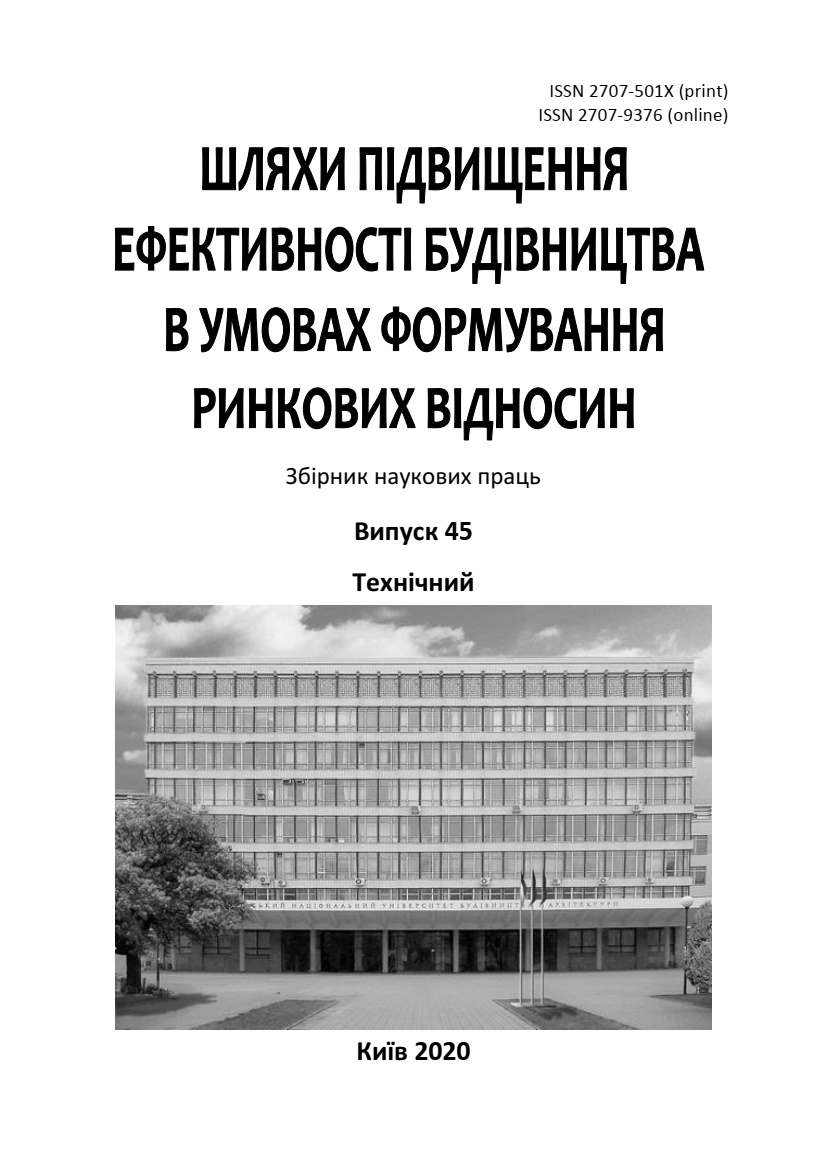Energy-saving window systems: types, development, comparisons and perspectives
DOI:
https://doi.org/10.32347/2707-501x.2020.45.57-70Keywords:
energy efficiency, smart windows, decorative fences, electricity, air conditioning, smart glass, building technologies.Abstract
The tendency to use natural resources is decreasing; energy conservation and ecosystems are taking the first positions. Therefore, the use of glass finishing of buildings has become a starting point in the search for new technologies to save energy use, reduce the need for air conditioning and additional lighting. The developed smart glass is an advanced type of glass that can change transparency depending on different conditions, or convert sunlight into electricity that can be used for human needs. The work examines the appearance of the first types of smart windows, and further development of smart windows using various films, chemical and organic compounds. The prospect of using smart glass to improve natural lighting in various fields and the future possibilities of related technologies by comparing several types of smart glass. The main types of smart windows are presented: photochromic window, thermochromic window, electrochromic window, liquid crystal windows, windows based on suspended particles, window using a "thermal mirror". On the basis of the given characteristics of various technologies of smart glass, its advantages and disadvantages, as well as the associated difficulties, which should be resolved in the future, are revealed. The existing classification of smart windows by the type of use of films in them and their advantages and disadvantages of using. The main newest technologies of absorption of sunlight by the surface of the window and the conversion of light into electricity, the problem of achieving transparency by glass, and the tendency of solving this issue are described. On specific examples, the areas of application of glass with controlled transparency are considered, and the economic indicators obtained when it is used in buildings. The technology of using solar panels in the form of blinds and their influence on providing the building with energy is considered. improvement of some of its optical properties, contributed to a decrease in its cost, which leads to an increase in the availability of this material.
References
Лобовку А.В. Енергозберігаючі віконні системи: стан, тенденції та перспективи / А.В. Лобовку // Молодий вчений. – 2018. – № 18 (204). – С. 75-80. – URL: https://moluch.ru/archive/204/49863/
Лапа М. Забезпечення енергоефективності будівель / М. Лапа, М. Двоєглазова, І. Печонкін, Ю. Лапа // Технічні науки та технології. 2017. № 1 (7). С. 225–233.
Донцова А.Е. Стекло с управляемой прозрачностью (smart window) в гражданском строительстве / А.Е. Донцова, А.В. Калинина // Alfabuild. 2018. № 4. С.73-82.
Електронна науково-технічна база з питань енергосбреження, інвестиційних і інноваційних проектів.
Steve DeBusk. A Review and Examination of EnerLogicTM Window Film Performance Claims. / 8p. //http:// www.luxivision.dk/assets/EnerLogic-White-Paper
Solutia Launches Industry-Changing EnerLogicR /70 Low-E Window Film. Jan. 25, 2012. URL: http://www.eastman.com/Company/About_Eastman/History/2012/Pages/Solutia_Launches_Industry_Changing_EnerLogic_70Low_EWindow_Film.aspx
Агаджанов М. КПД частично прозрачных окон с солнечными батареями превысил 11% / М.Агаджанов / Хабр. 2017. URL: https://habr.com/ru/post/408789/
Hui Huang et al. Solvothermal synthesis of Sb:SnO2 nanoparticles and IR shielding coating for smart window / Materials & Design (2015). // DOI: 10.1016/j.matdes.2015.09.013]
Авельсник Н. SolarWindow навчили звичайні вікна виробляти електроенергію // Хайтек. 2016. URL: https://hightech.fm/2016/09/02/solar_window
Jingwen Xu et al. "Electrochromic-Tuned Plasmonics for Photothermal Sterile Window." // ACS Nano. 2018 // DOI: 10.1021/acsnano.8b02292]
Joseph Murray et al. Electrically Controllable Light Trapping for Self-Powered Switchable Solar Windows // ACS Photonics (2016). // DOI: 10.1021/acsphotonics.6b00518]
SolarGaps: жалюзі з сонячними батареями забезпечать квартиру безкоштовної електроенергією. / Екотехніка. 2016. URL: https://ecotechnica.com.ua/energy/solntse/1188-solargaps-zhalyuzi-s-solnechnymi-batareyami-obespechat-kvartiru-besplatnoj-elektroenergiej.html]
Коваль О.В., Мурзін А.В., Наумець І.І. Застосування монохромного Смарт-скла при проектуванні закладів готельного господарства. // Современная научная идея. 2017. 7с. URL: www.sworld.com.ua.
Закируллин Р. С. Перспективы применения Смарт – окон в архитектуре и строительстве. 8c. URL: http://elib.osu.ru/bitstream/123456789/1105/1/368–375.pdf]
Ruben Baetens, Bjorn Petter Jelle, Arild Gustavsen. Properties, Requirements and Possibilities of Smart Windows for Dynamic Daylight and Solar Energy Control in Buildings // State-of-the-Art. 2010. 29 р. URL: https://brage.bibsys.no/xmlui/bitstream/handle/11250/2436360/Properties+Requirements+and+Possibilities+of+Smart+Windows+-for+Dynamic+Daylight+and+Solar+Energy+Control+in+Buildings+-+State-of-the-Art+-+Article+-+Submitted+Version.pdf?sequence=3]
Marco Casini. Smart windows for energy efficiency of buildings. 2017. p.273–281. URL: https://afterglass.ca/wp-content/uploads/2017/08/energy-report.pdf]
Downloads
Published
How to Cite
Issue
Section
License
Copyright (c) 2021 Yu. S. Riabinina, T. Yu. Tsyfra

This work is licensed under a Creative Commons Attribution 4.0 International License.
Authors who publish with this journal agree to the following terms:
- Authors retain copyright and grant the journal right of first publication with the work simultaneously licensed under a Creative Commons Attribution License that allows others to share the work with an acknowledgement of the work's authorship and initial publication in this journal.
- Authors are able to enter into separate, additional contractual arrangements for the non-exclusive distribution of the journal's published version of the work (e.g., post it to an institutional repository or publish it in a book), with an acknowledgement of its initial publication in this journal.
- Authors are permitted and encouraged to post their work online (e.g., in institutional repositories or on their website) prior to and during the submission process, as it can lead to productive exchanges, as well as earlier and greater citation of published work (See The Effect of Open Access).

